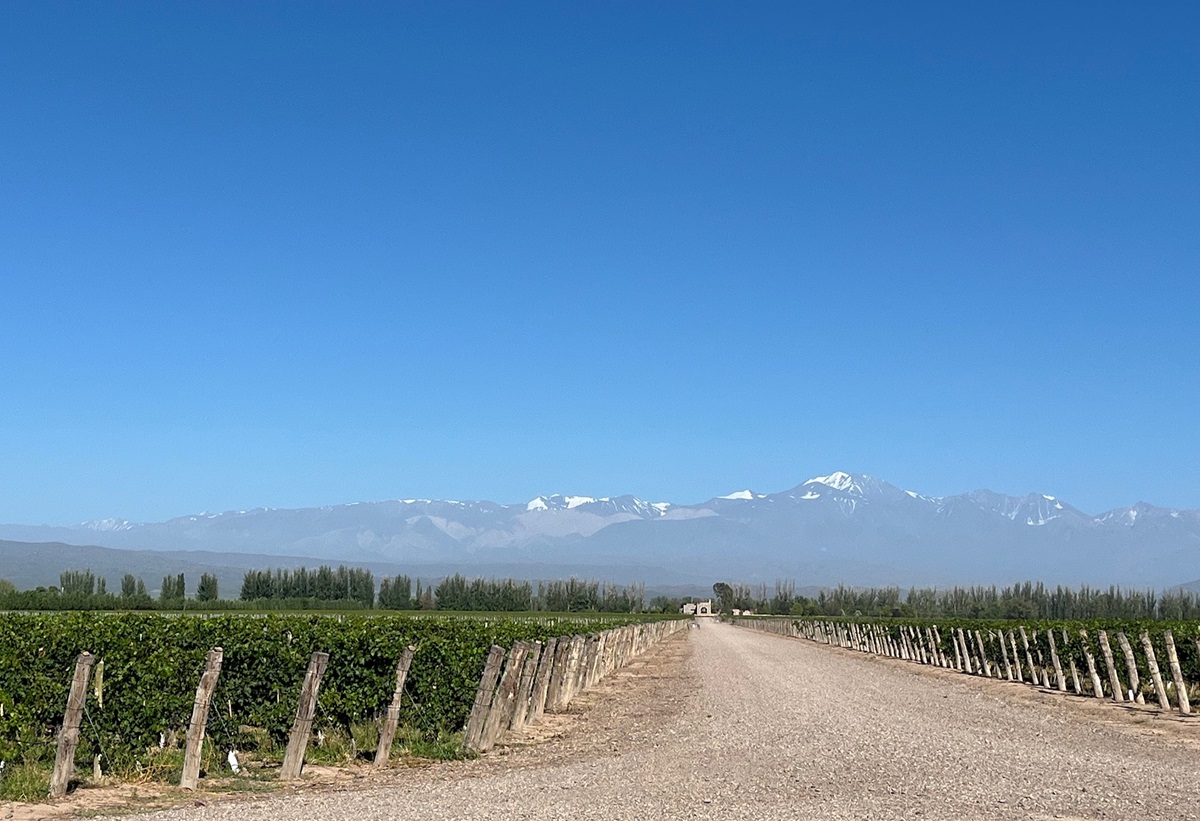ARNEIS GRAPE
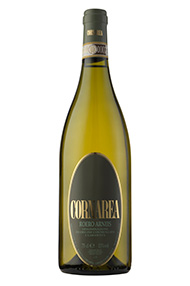
By Rose Murray Brown MW Published in The Scotsman 5 October 2019
Known as the ‘little rascal’, Arneis (pronounced ahr-nase) is a very temperamental Italian grape with a long history in its native Piedmont, but it is now gaining interest across the world. It can make deliciously fragrant whites which taste like a slightly spicy version of Chablis with a richness of texture similar to grapes like Verdelho and Vermentino
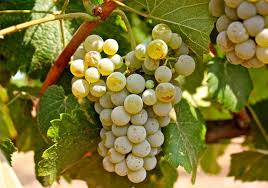 This small-berried traditional Italian variety got its name as a troublesome grape from vinegrowers due to its erratic ripening habits and temperamental nature during fermentation. When it grows well it can produce really vivid complex tangerine, apricot and peach aromas with a delicious sweet sour texture on the palate. Most Arneis are dry and unoaked, although some experiement with oak and sweeter passito styles.
This small-berried traditional Italian variety got its name as a troublesome grape from vinegrowers due to its erratic ripening habits and temperamental nature during fermentation. When it grows well it can produce really vivid complex tangerine, apricot and peach aromas with a delicious sweet sour texture on the palate. Most Arneis are dry and unoaked, although some experiement with oak and sweeter passito styles.
Arneis originated and is still widely grown in the Roero hills of Italy’s southern Piedmont just across the River Tanaro from Barolo, Barbaresco and just north of the town of Alba in north-west Italy.
In fact it was once called ‘white Barolo’. Arneis used to be planted in Barolo’s vineyards interspersed amongst Nebbiolo as its floral blossomy aromas attracted birds, which protected the more precious Nebbiolo grapes (the main grape of Barolo) and was also used to soften this thick-skinned red grape in the field blend.
Sadly Arneis fell from favour as growers abandoned this awkward grape in favour of more plantings of popular Nebbiolo. It almost became extinct – but was rescued from extinction by Bruno Giacosa in late C20 finding its home in the sandy chalky soils of the Roero hills. Now winemakers, using cool fermentation techniques have learnt to protect its distinctive perfumes of apricot, tangerine and licquorice.
The best Italian example in our Arneis tasting was from the Bovone family at Cornarea estate in Piedmont. Gian Piero Bovon planted his entire 15 hectare hillside with Arneis, making his first wine in 1981. His vineyards are on the sandy calcareous soils of the Canale, which are rich in magnesium minerals giving the wine an uplifting salty minerality. In fact the soil is so rich here that C19 doctors in nearby Canale made a fortune in the past selling salt of magnesium as a remedy.
Other Barolo producers like Poderi Marcarini are now showing an interest in Arneis – they have recently bought two hectares of Arneis vineyards from a total of seven different owners in the village of Montaldo in the Roero. Elsewhere in Italy, there are only tiny amounts of Arneis planted in Sardinia and Ligurian coast – where growers tend to favour the easier-growing Vermentino.
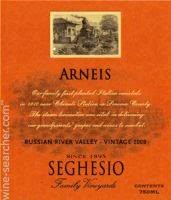 Italianate communities in the New World have also been perservering with the tricky Arneis. In California, the Seghesio family in Sonoma valley imported cuttings in early 1990s and planted Arneis in cooler drier spots in Russian River Valley. For some time they had the largest plantings of Arneis in the US – there are less than 20 acres in total in California – today they have just over three hectares planted at their Keyhole Ranch.
Italianate communities in the New World have also been perservering with the tricky Arneis. In California, the Seghesio family in Sonoma valley imported cuttings in early 1990s and planted Arneis in cooler drier spots in Russian River Valley. For some time they had the largest plantings of Arneis in the US – there are less than 20 acres in total in California – today they have just over three hectares planted at their Keyhole Ranch.
“For four years we just got leaves and no fruit – now we get fruit but it can develop mildew and rot easily”, says Seghesio winemaker Andy Robinson. “Russian River’s climate with warm days and cool fog-influenced nights help Arneis to keep its acidity and in good years like 2018 can produce very delicate expressive flavours”.
In Oregon, one of the late 1960’s wine pioneers was Michigan-born Disney engineer Dick Ponzi, who was the third son of an Italian immigrant whose family had moved to US from Italy back in 1934. Dick Ponzi started planting Arneis in 1991 and today his winemaking daughter Luisa Ponzi makes a good example from their five acres of Arneis grown on their Aurora vineyard, near their stylish modern winery just half an hour’s drive from Portland in the Chehalem Mountains, bottling it under screwcape to retain its freshness.
In Australia, winegrower Garry Crittenden was the first to plant Arneis down-under back in 1985. He used to blend Arneis with Fiano and Vermentino – but sadly last year his son Rollo Crittenden made his final vintage of Arneis in Mornington Peninsula as he has now grafted the vines to Chardonnay.
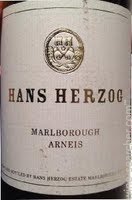 Today there are about 40 hectares of Arneis in Australia, mainly found in Riverina in New South Wales, Riverland and Adelaide Hills in South Australia and King Valley in Victoria – but it is proving difficult to retain interest in this grape as the yields are low and it is susceptible to vineyard disease. Arneis is certainly not as popular as Italian grape Fiano downunder.
Today there are about 40 hectares of Arneis in Australia, mainly found in Riverina in New South Wales, Riverland and Adelaide Hills in South Australia and King Valley in Victoria – but it is proving difficult to retain interest in this grape as the yields are low and it is susceptible to vineyard disease. Arneis is certainly not as popular as Italian grape Fiano downunder.
Arneis was first planted on New Zealand’s North Island in 1998 at Clevedon valley near Auckland – it currently has 33 hectares with wineries like Coopers Creek in Gisborne, Villa Maria in Hawkes Bay and Tua Marina and Hans Herzog in Marlborough producing tiny quantities of attractively delicate fresh vibrant examples of Arneis which are not available in the UK – but perhaps New Zealand’s cool climate and diurnal variation might prove the best home outside Piedmont for this tricky grape.
ARNEIS TASTE TEST
Piedmont, NW Italy: ROERO ARNEIS 2018 Cascina Valentino (13.5%)
(£8.50 Asda)
Blossom and nectarine, aniseed and spice notes, vibrant acidity and moderate length.
Piedmont, NW Italy: ROERO ARNEIS 2015 Fratelli Brovia (13%)
(£19.50 Raeburn Wines, Edinburgh)
Apricot and floral nose with developed nutty undertones, creamy smooth texture with crisp acid finish.
Piedmont, NW Italy: ROERO ARNEIS 2018 Poderi Marcarini (13.5%)
(£15.50 Berry Bros & Rudd)
Honey and acacia flower bouquet, dry crisp palate with a sweet sour twist to the finish.
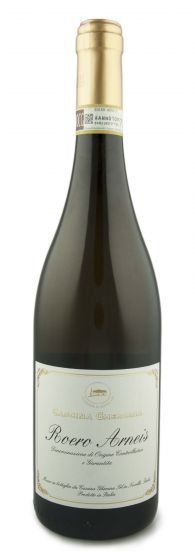 Piedmont, NW Italy: ROERO ARNEIS 2017 Cascina Ghercina (13.5%) ***STAR BUY***
Piedmont, NW Italy: ROERO ARNEIS 2017 Cascina Ghercina (13.5%) ***STAR BUY***
(£12.50 Corney & Barrow)
Hint of pear and apricot, vibrant acid with exotic tropical fruit notes.
Piedmont, NW Italy: ROERO ARNEIS PRADALUPO 2017 Fontanafredda (13.5%)
(£17.95 Great Western Wine)
Light honey and pear notes, creamy velvety palate with enticing freshness.
Piedmont, NW Italy: ROERO ARNEIS 2016 Cornarea (13.5%) ***STAR BUY***
(£18.80 Berry Bros & Rudd)
Peach and lime notes, rich complex texture with a hint of wax and salt.
Chehalem Mountains, Oregon: ARNEIS 2017 Ponzi (13.5%)
($29 n/a in UK)
Light pear notes, crisp palate with fresh high acid, sweet sour notes –
Sonoma, California: RUSSIAN RIVER VALLEY ARNEIS 2018 Seghesio (13.5%)
(£23 Fine Wine Co Musselburgh)
Pearskins and floral notes, tightly wound palate, apricot fruits, sweet sour notes with a crisp dry finish.
Join Rose’s Fine Wine Dinner in Rhubarb in Prestonfield House Hotel, Edinburgh on 24 October £96 for four courses & eight fine wines www.rosemurraybrown.com
wine tastings
The perfect gift for the wine enthusiast in the family. Rose does In-person tastings too.
cellar advice
Rose does cellar valuations for private clients, valuations for insurers & bespoke portfolio management.
Related stories
March 31, 2024
By Rose Murray Brown MW Published in The Scotsman 30 March 2024 On 2 February 1659, the first wine made from grapes grown in South Africa was crafted by the Governor of the Cape, Jan van Riebeeck. He had planted vines four years earlier in the Company’s Garden near Cape Town from cuttings imported from France. Van Riebeeck’s first
March 24, 2024
By Rose Murray Brown MW Published in The Scotsman 16 March 2024 Heatwaves and bushfires were very much on the agenda when I visited Chile last month as winemakers prepared for their 2024 harvest in blistering heat and drought, with a plume of smoke from the devastating fires lingering over coastal hills. Heat and drought are the greatest challenges
March 23, 2024
By Rose Murray Brown MW Published in The Scotsman 9 March 2024 I have two glasses of Malbec in my hands from the same high-altitude vineyard in Uco valley in Argentina. I am in the Catena Institute of Wine in Mendoza with winemaker Agustin Silva. He has asked me to taste the two wines, both from the 1500m high



